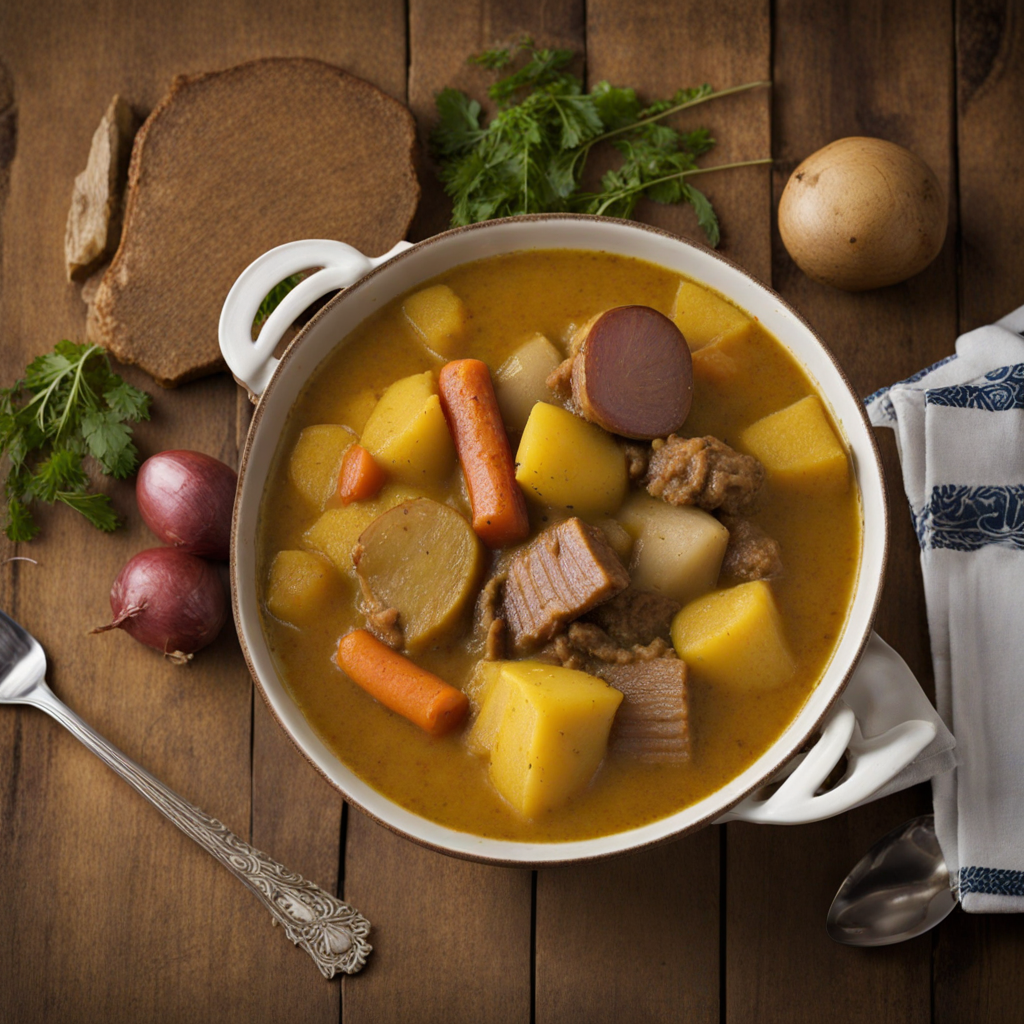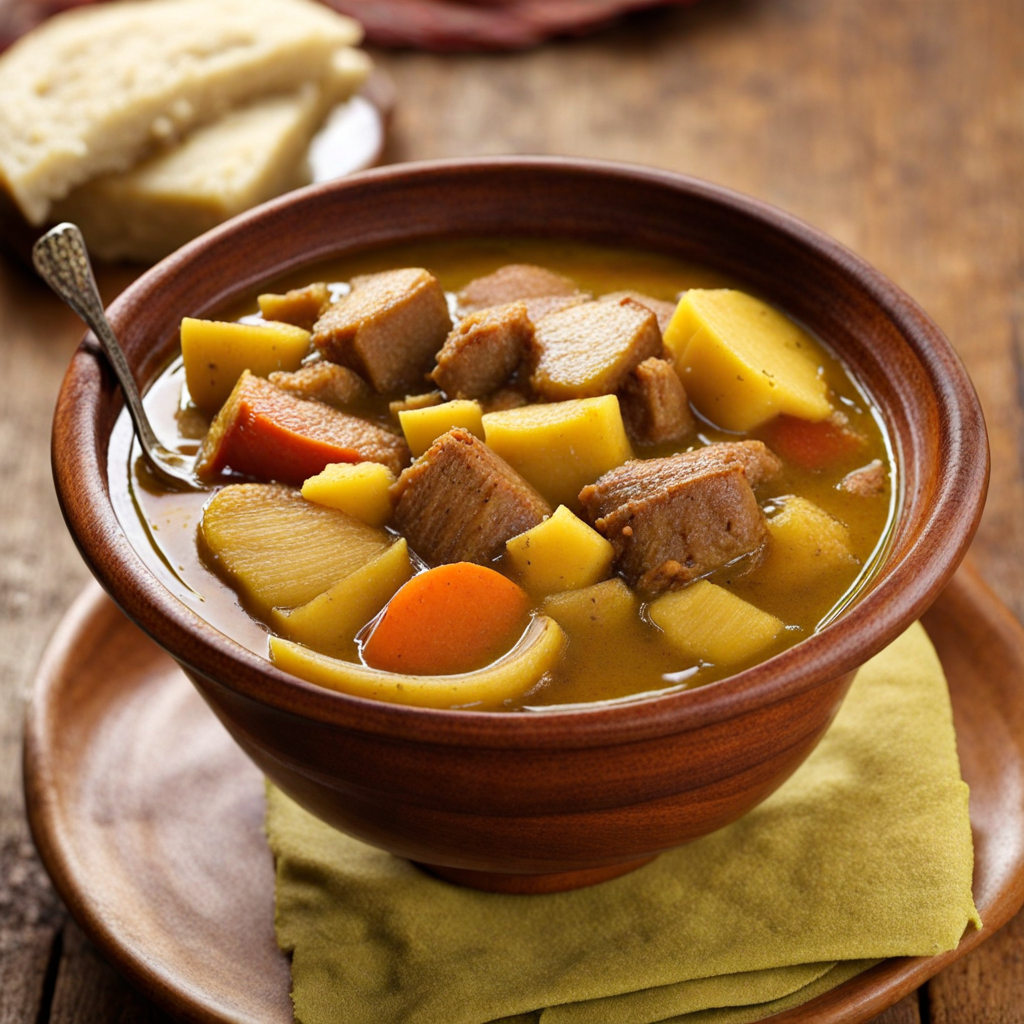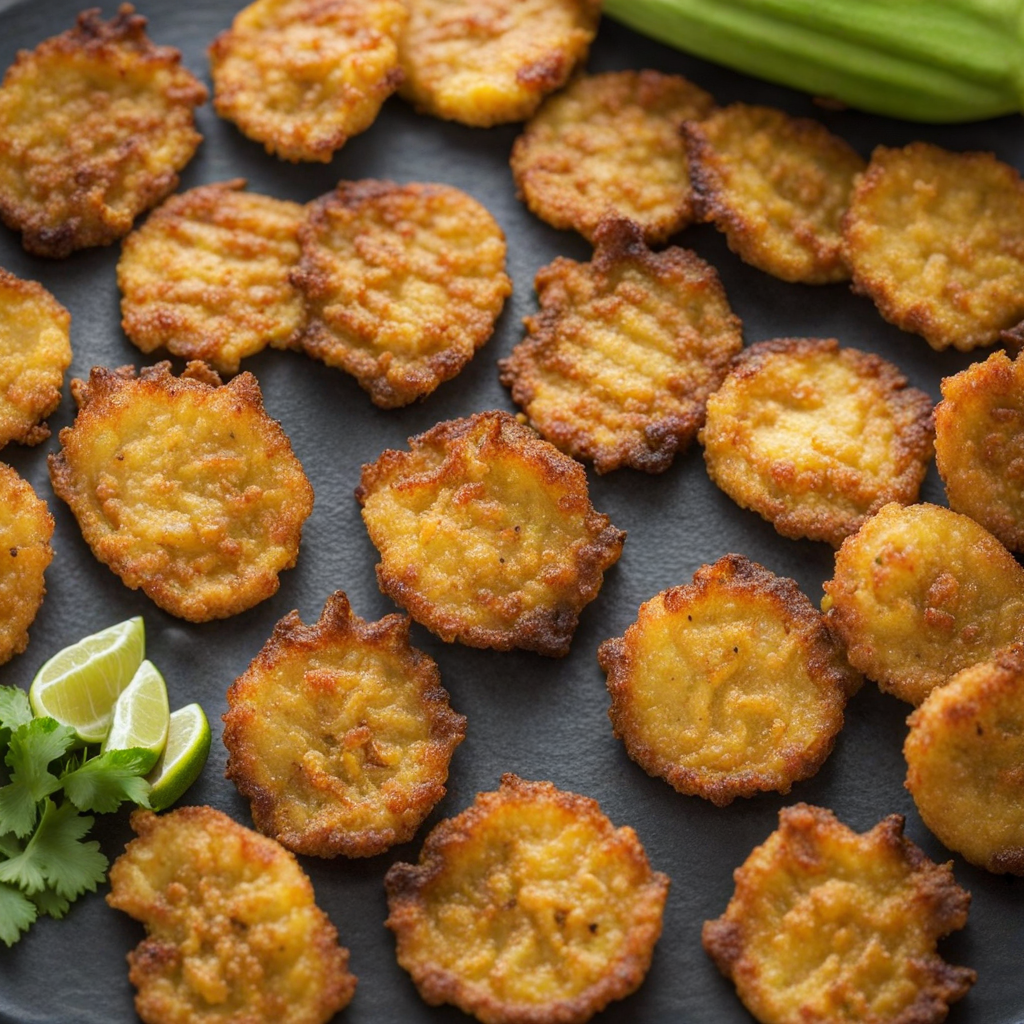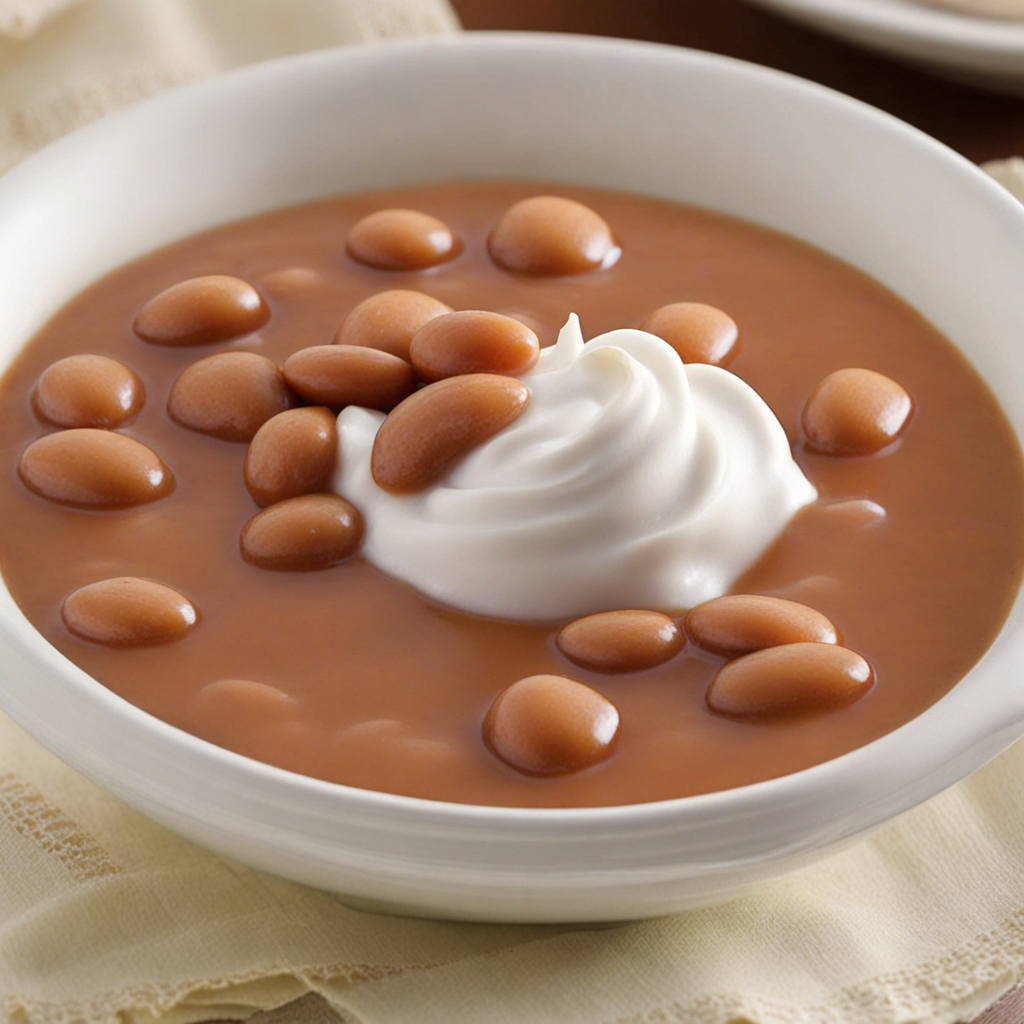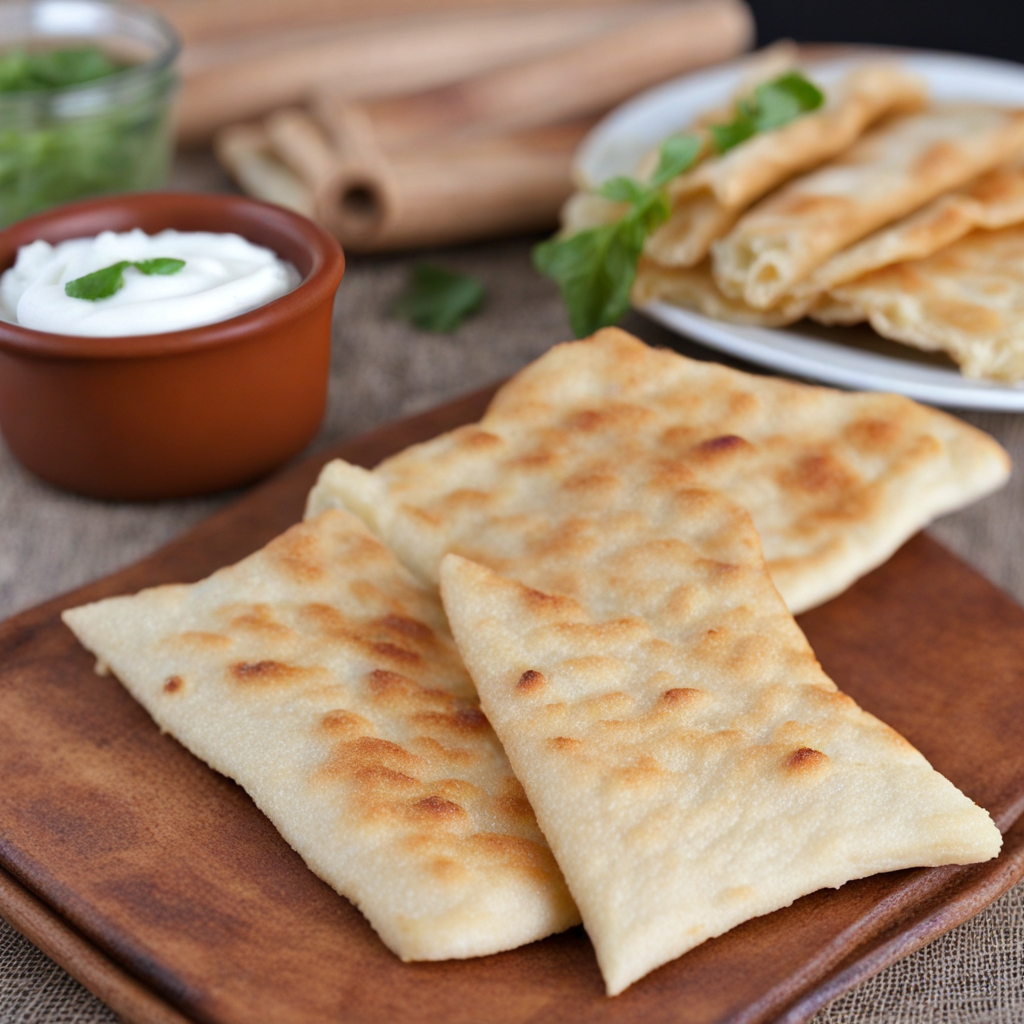Sancocho
Sancocho is a hearty and flavorful stew that holds a special place in Dominican cuisine, often enjoyed during family gatherings and festive occasions. This comforting dish is a medley of meats, typically including chicken, beef, and pork, simmered to perfection with a variety of root vegetables such as yuca, plantains, and potatoes. The combination of these ingredients creates a rich, savory base that is both satisfying and nourishing, making Sancocho a beloved staple among Dominicans. The preparation of Sancocho begins with marinating the meats in a blend of spices and citrus, which infuses them with zesty flavors. Once seared, the meats are combined with a broth made from the aromatic sofrito—a mixture of sautéed onions, garlic, bell peppers, and herbs. The vegetables are added to the pot, allowing them to absorb the flavors of the meat and spices as they cook. The result is a thick, rustic stew that showcases the vibrant culinary traditions of the Dominican Republic. What truly sets Sancocho apart is its versatility; variations exist across different regions and families, each adding their own unique twist. Some might include corn on the cob or other seasonal vegetables, while others may adjust the level of spiciness with the addition of hot peppers. Traditionally served with a side of avocado and rice, Sancocho is not just a meal, but an experience—a delicious journey into the heart of Dominican culture, where flavors and communal sharing come together in perfect harmony.
How It Became This Dish
The Rich Tapestry of Sancocho: A Culinary Journey Through the Dominican Republic Sancocho is more than just a dish; it is a culinary symbol of the Dominican Republic that embodies the nation’s history, culture, and communal spirit. A hearty stew made from a medley of meats, root vegetables, and spices, Sancocho is often prepared for family gatherings, celebrations, and special occasions. Its origins are as rich and diverse as its ingredients, reflecting the complex tapestry of influences that have shaped Dominican cuisine over centuries. #### Origins and Historical Influences The roots of Sancocho can be traced back to the indigenous Taíno people, who inhabited the island of Hispaniola long before European colonization. The Taíno cultivated a variety of root vegetables, such as yuca (cassava), sweet potatoes, and taro, which would later become essential components of Sancocho. These ingredients were not only staples of their diet but also integral to their cultural practices and traditions. When Christopher Columbus arrived in 1492, he ushered in an era of colonization that dramatically altered the island’s demographics and culinary landscape. Spanish settlers brought with them their culinary traditions, including stews and broths, which began to intermingle with the indigenous practices. The introduction of livestock, such as cattle, goats, and pigs, further diversified the flavors and textures of local dishes. The African influence in Dominican cuisine became prominent during the transatlantic slave trade, which brought millions of enslaved Africans to the Caribbean. These individuals contributed their cooking techniques, ingredients, and flavors, leading to the development of a uniquely Dominican identity within the culinary realm. The combination of indigenous, Spanish, and African elements gave rise to Sancocho as we know it today, with each culture leaving an indelible mark on its preparation and consumption. #### Cultural Significance Sancocho is not just a meal; it is a cultural ritual that represents family, community, and togetherness. Traditionally, it is served during special occasions, such as holidays, birthdays, and family reunions. The preparation of Sancocho is often a communal activity, where family members gather to chop vegetables, season the meat, and stir the pot. This collaborative effort fosters a sense of unity, echoing the way food has historically brought people together. In the Dominican Republic, Sancocho is often referred to as the "national dish," although it varies significantly from region to region. While the basic components remain relatively consistent—meat, root vegetables, and spices—the specific ingredients and methods of preparation can differ based on local traditions and available resources. For example, the Sancocho of the capital, Santo Domingo, might feature different cuts of meat and vegetables compared to that found in rural areas, where more rustic ingredients may be used. The significance of Sancocho extends beyond its role in family gatherings. It is also a dish of comfort and nourishment during difficult times. Many Dominicans have fond memories of Sancocho being prepared during moments of grief or hardship, highlighting its role as a source of solace. The act of sharing Sancocho has become a way to offer support and solidarity among friends and family, reinforcing its status as a dish intertwined with the social fabric of Dominican life. #### Development Over Time As Dominican culture has evolved, so too has the dish of Sancocho. The 20th century brought about significant changes in the culinary landscape of the Dominican Republic, influenced by globalization, migration, and modernization. The traditional recipes began to adapt, incorporating new ingredients and techniques, yet maintaining the essence of what makes Sancocho so beloved. In urban areas, the dish has become more accessible, with restaurants and street vendors offering their own interpretations of Sancocho. These modern versions often utilize pre-packaged ingredients and quicker cooking methods, reflecting the fast-paced lifestyle of contemporary Dominican society. However, many families still cling to traditional recipes handed down through generations, emphasizing the importance of preserving culinary heritage. In recent years, the rise of food tourism has also spotlighted Sancocho, bringing it to the attention of international audiences. As more travelers seek authentic culinary experiences, Sancocho has become a point of pride for many Dominicans, showcasing the richness of their culinary traditions. Food festivals and culinary events celebrating Dominican cuisine often feature Sancocho as a centerpiece, allowing chefs to experiment with flavors while honoring its historical roots. #### Ingredients and Variations The beauty of Sancocho lies in its versatility. While the core ingredients typically include meats like chicken, beef, and pork, the dish can easily be adapted to include a variety of proteins, such as fish or even vegetarian options. The choice of root vegetables is also varied, with yuca, plantains, potatoes, and corn being common additions. Each ingredient contributes to the dish’s depth of flavor and heartiness. The seasoning of Sancocho is equally important. A blend of garlic, onions, cilantro, and spices gives the stew its distinctive aroma and taste. In some regions, the addition of aji (a type of pepper) or other local spices adds an extra kick, while others may incorporate coconut milk for a creamier texture. The result is a dish that is not only filling but also bursting with flavors, capable of warming the soul. #### Conclusion Sancocho is a culinary masterpiece that tells the story of the Dominican Republic through its rich history and cultural significance. A dish forged from the interplay of indigenous, Spanish, and African influences, it embodies the resilience and unity of the Dominican people. As it continues to evolve, Sancocho remains a cherished symbol of home and community, inviting all who partake in it to share in the warmth of its flavors and the love of those who prepare it. Whether enjoyed at a family gathering or a festive celebration, Sancocho will always hold a special place in the hearts of Dominicans, a testament to the power of food in bringing people together and preserving cultural heritage.
You may like
Discover local flavors from Dominican Republic


